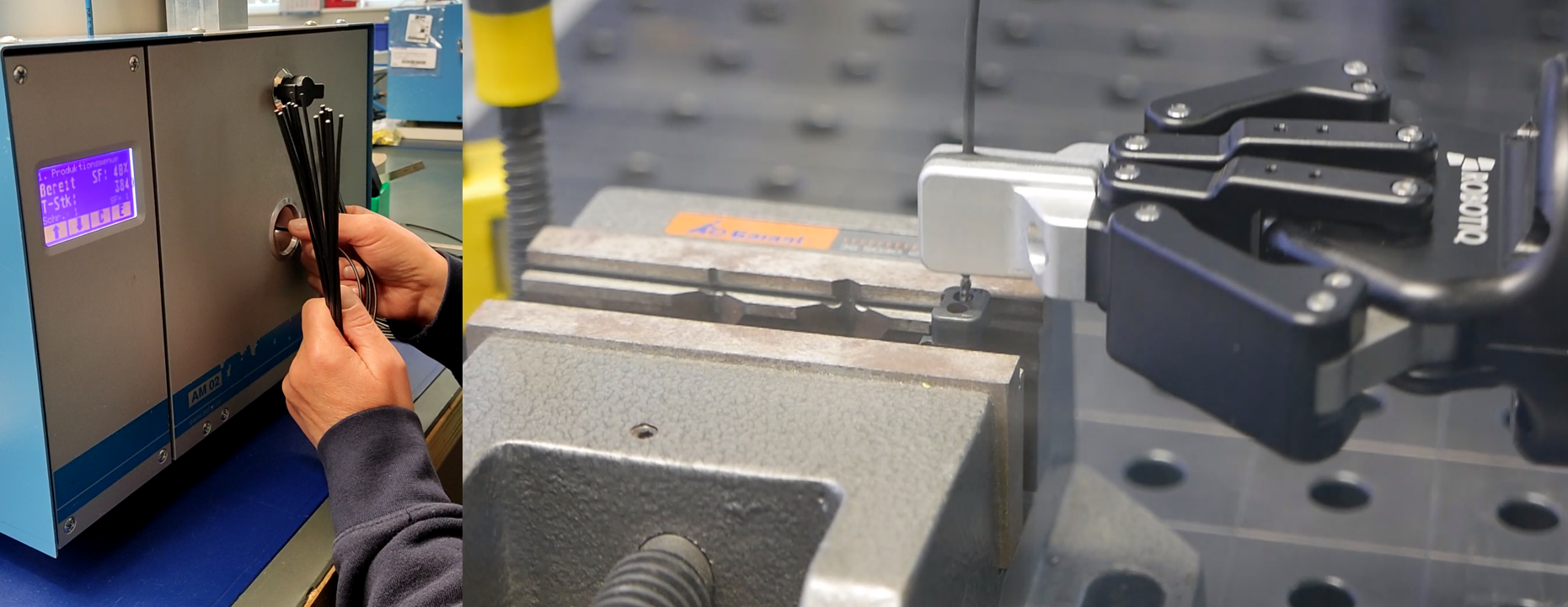FlexCab - flexible, intelligent cable assembly
Initial situation
With the shift towards electromobility, the economical assembly of high- and low-voltage connectors in automotive engineering is becoming increasingly important. The laborious assembly of the connectors is almost exclusively manual work and therefore cognitively stressful for the workers. Alternatively, highly specialized automatic machines are available on the market, but these are only suitable for correspondingly high quantities. In addition, current automated assembly solutions are prone to faults due to tolerances and inaccuracies. Companies in the cable industry therefore need innovative automation solutions in order to be able to continue manufacturing economically in Baden-Württemberg in the future. Schleuniger would like to offer cable assemblers promising new automation solutions for this purpose. As part of the Quick Check, flexible, intelligent robot systems were initially to be analyzed in a structured manner in order to exploit their potential in a targeted manner.
Solution idea
As part of previous research work at Fraunhofer IPA, the researchers identified the force-controlled, robot-based execution of assembly processes for cable and connector assembly as a promising solution in cable assembly. In the future, the combination of robot-based automation with artificial intelligence (AI) may also represent a promising extension for the long-term economic assembly of connectors. AI can provide support here, particularly when programming the robot, in order to react flexibly to deviations such as component positions in the process.

Source: Arik Lämmle, Fraunhofer IPA
Benefit
Flexible, robot-based automation solutions for the assembly of connectors directly address the current pain points of cable assembly companies and the cable processing industry in general in order to maintain production capacities in Baden-Württemberg in the long term. Force-controlled robot skills and their parameterization using AI significantly reduce the robot's programming effort. Skill-based, executable robot programs can also be reused for new products and processes with little effort by adapting the parameters. "Parameterization instead of programming" offers a suitable starting point for training future models using deep reinforcement learning or supervised learning in order to identify the appropriate skill parameters depending on the component and process and to react to tolerances in the process.
Implementation of the AI application
The aim of the quick check was to investigate whether automated connector assembly is feasible in principle with the help of intelligent robot systems. To this end, the researchers at Fraunhofer IPA carried out initial prototype tests of individual sub-process steps on one of their robot cells. They used the modular programming kit "pitasc" as the basis for AI-based extensions, such as process monitoring using supervised learning or the training of skill parameters in the simulation.